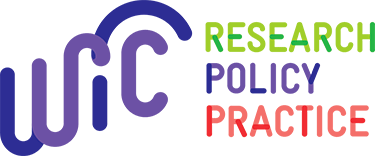The Special Supplemental Nutrition Program for Women, Infants and Children (WIC) is our country’s premier public health nutrition program. In recent years, WIC caseload has been declining and fewer eligible […]
This webinar focused on three different strategies that document the many significant impacts of WIC program participation. The strategies were: 1. Maximizing the use of WIC EBT data 2. Using […]
The webinar provided an update on the status of the NWA’s national recruitment & retention campaign. Presenter: Hannah Shultz, National WIC Association
Rebates from infant formula manufacturers to State agencies that administer the Special Supplemental Nutrition Program for Women, Infants, and Children (WIC) support over one-quarter of all WIC participants. However, concerns have been raised that WIC and its infant formula rebate program may significantly affect the infant formula prices faced by non-WIC consumers. This report presents findings from the most comprehensive national study of infant formula prices at the retail level. For a given set of wholesale prices, WIC and its infant formula rebate program resulted in modest increases in the supermarket price of infant formula, especially in States with a high percentage of WIC formula-fed infants. However, lower-priced infant formulas are available to non-WIC consumers in most areas of the country, and the number of these lower priced alternatives is increasing over time.
Since 1998, Congress has provided funds to ERS to study and evaluate the Nation's domestic food and nutrition assistance programs. ERS has become the premier source of food and nutrition assistance research in the United States, sponsoring over 600 publications on a wide range of topics related to food and nutrition assistance. This report, prepared at the 10-year anniversary of the FANRP program, highlights some of the key research conducted during the program's first decade.
In fiscal 2008, the $4.6 billion of food purchased with vouchers from the Special Supplemental Nutrition Program for Women, Infants, and Children (WIC) generated $1.3 billion in farm revenue. Because WIC participants would have purchased some of these foods with their own money in the absence of the program, the net addition to farm revenue from WIC is estimated at $331 million and the net increase in full-time-equivalent farm jobs at 2,640. The study uses an Input-Output Multiplier Model to derive these estimates and assumes that recent revisions in the WIC food packages were implemented in all States in fiscal 2008.
Abstract: One of the most worrisome aspects of the growing tide of obesity in the United States is the high rate of overweight among children. Over one in five young […]
The mission of the Special Supplemental Nutrition Program for Women, Infants, and Children (WIC) is to safeguard the health of low-income women, infants, and children through age 4 who are at nutritional risk. WIC provides nutritious foods to supplement diets, nutrition education, and referrals to health care and other social services. Administered by USDA's Food and Nutrition Service (FNS), almost half of all infants and about a quarter of all children ages 1-4 in the United States participate in the program. WIC is USDA's third-largest food and nutrition assistance program, accounting for 10 percent of total Federal spending on food and nutrition assistance. This report describes the WIC program-how it works, its history, program trends, and the characteristics of the population it serves. It also examines current issues facing WIC, focusing mainly on those with important economic implications.
Despite the health benefits of participation, many eligible households do not participate in the Special Supplemental Nutrition Program for Women, Infants, and Children (WIC). While roughly half of infants born in the United States receive WIC benefits, USDA statistics indicate that eligible pregnant women and children 1-5 years of age are far less likely to participate in WIC than eligible infants and postpartum women. This implies that a number of pregnant women delay enrollment until after having a child, and that many households leave the program when a participating child turns 1 year old. Research on the factors that influence the dynamics of WIC participation can inform outreach and targeting efforts, so that vulnerable populations receive adequate exposure to the benefits of WIC participation.
Abstract: The Special Supplemental Nutrition Program for Women, Infants, and Children (WIC) provides supplemental foods to low-income women, infants, and children at nutritional risk. Since October 2009, WIC packages have […]
